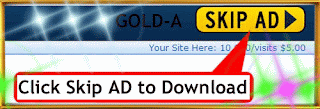
SamLogic USB Menu Creator With our USB Menu Creator product you can create an AutoRun menu interface for a USB flash drive / USB stick in an easy way. USB Menu Creator will add true AutoRun capabilities to your USB flash drive, which means that your created menu interface will be shown automatically on the screen when your USB stick is plugged into a USB port in a computer. It will work in a similar way as an AutoRun menu interface for a CD or DVD, but with the difference that the USB flash drive menu interface will be shown much faster. Stunning menu interfaces can be created
With our USB Menu Creator product you can create an AutoRun menu interface for a USB flash drive / USB stick in an easy way. USB Menu Creator will add true AutoRun capabilities to your USB flash drive, which means that your created menu interface will be shown automatically on the screen when your USB stick is plugged into a USB port in a computer. It will work in a similar way as an AutoRun menu interface for a CD or DVD, but with the difference that the USB flash drive menu interface will be shown much faster. Stunning menu interfaces can be created
With the menu designer tool that is included in USB Menu Creator you can design and create stunning menu interfaces for USB flash drives. On a menu interface you can place buttons, hyperlinks, hotspots, images, videos etc. Various effects, for example shadows, glass effects, 3D effects, can be used with the visual objects on a menu. Many different graphical button styles are available in the USB Menu Creator tool. Sound effects
Sound effects
You can also add sound and music to your menu interfaces. For example, when a user moves the mouse pointer above a button, a sound effect can be played. You can also add a short intro music or sound effect that is played when the menu is opened the first time. Can be used to run programs, open documents and play videos
From a menu interface the user can run a program, open a document, or play a video in an easy way. The menu interface can also be used to let the user start a setup program, play a Flash animation, open an Excel worksheet, open a PowerPoint presentation etc. Play videos and Flash animations directly in the menu interface
Videos and Adobe Flash animations can be played directly in the menu interface. No external program is needed to show the video / animation. However, you can choose to use an external program instead (for example Windows Media Player or Adobe Flash Player) if you prefer that. AutoRun for USB flash drive devices
Microsoft disabled the AutoRun function for USB flash drive devices a few years ago, but by using a tool that is included in USB Menu Creator you can enable AutoRun for USB flash drives again. Your menu interfaces will be shown automatically on your end-users’ screens when they plug your USB stick into their computer's USB ports. More information about the AutoRun method that we use is available on
With the menu designer tool that is included in USB Menu Creator you can design and create stunning menu interfaces for USB flash drives. On a menu interface you can place buttons, hyperlinks, hotspots, images, videos etc. Various effects, for example shadows, glass effects, 3D effects, can be used with the visual objects on a menu. Many different graphical button styles are available in the USB Menu Creator tool.
You can also add sound and music to your menu interfaces. For example, when a user moves the mouse pointer above a button, a sound effect can be played. You can also add a short intro music or sound effect that is played when the menu is opened the first time. Can be used to run programs, open documents and play videos
From a menu interface the user can run a program, open a document, or play a video in an easy way. The menu interface can also be used to let the user start a setup program, play a Flash animation, open an Excel worksheet, open a PowerPoint presentation etc. Play videos and Flash animations directly in the menu interface
Videos and Adobe Flash animations can be played directly in the menu interface. No external program is needed to show the video / animation. However, you can choose to use an external program instead (for example Windows Media Player or Adobe Flash Player) if you prefer that. AutoRun for USB flash drive devices
Microsoft disabled the AutoRun function for USB flash drive devices a few years ago, but by using a tool that is included in USB Menu Creator you can enable AutoRun for USB flash drives again. Your menu interfaces will be shown automatically on your end-users’ screens when they plug your USB stick into their computer's USB ports. More information about the AutoRun method that we use is available on







.jpg)












